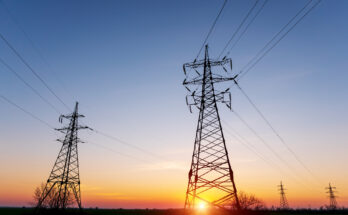When the United Nations adopted the Paris Agreement, countries began looking for ways to reduce emissions. Many energy specialists moved to renewable energy sources, resulting in long-term power supply. While many people identify solar as an important renewable energy source, wind turbines provide more worldwide energy.
Wind power technology is being improved by environmental engineers and scientists, making it more affordable while reducing greenhouse gas emissions. They observed that larger manufacturing facilities and turbines might enhance supply sizes, allowing areas to transition from fossil fuels to clean power. Wind power’s availability, dependability, and cost-efficiency can all help to increase atmospheric conservation.
Developing Larger Turbines
Between 1998 and 2020, the size of turbines grew by roughly 59 percent. Most land turbines are now 90 meters tall, with offshore versions reaching 100 meters. According to researchers, the average offshore turbine height will reach 150 meters by 2035, which is the same height as the Washington Monument.
Taller turbines are being developed by manufacturers in order to reach more productive wind zones. As devices climb vertically, wind shear enhances output rates. Taller turbines generate more power than ever before.
Engineers are also developing turbines with bigger rotors to generate more power more efficiently. The cost of power decreases as the availability of clean energy grows. The increased scale of wind power technology imposes some transportation constraints and necessitates the use of monitoring shipment systems.
Field devices were created by transit specialists to record cargo operations and conditions. They also keep an eye on the turbine’s stability during the journey to ensure its safety. Technological advances enable energy experts to ship turbines more effectively and to build wind farms.
Offshore Wind Plant Expansion
Global decarbonization initiatives necessitate the growth of offshore wind farms. The United States alone intends to increase energy output by 30 gigatonnes (GW), which equates to enough emission-free electricity to power 90 million homes. Countries are establishing funding for renewable energy development projects in order to increase output rates even higher.
Between 2010 and 2019, the number of offshore wind projects expanded dramatically. Initially, wind farms produced 190 megawatts (MW) of power worldwide. As they developed in size, they began to produce 400 MW on average.
Since wind farms grew, the average cost of sustainable energy has plummeted by approximately 40%. Researchers estimate that as plant sizes increase, the Levelized Cost of Energy (LCOE) would fall steadily until it reaches a plateau. Energy scientists assess the future impact of turbine advances and their effects on the LCOE.
Wind Turbine Prices are Falling
Longer blades have been fitted by turbine makers in recent years, allowing wind farms to gather more energy. Generators have attained their peak efficiency, producing greater power when combined with larger blades. The component changes are inexpensive, allowing users to obtain more emission-free power for less money.
While some energy specialists believe that windpower’s LCOE will fall as technology advances, others see restrictions. Individuals found that manufacturers had already attained ideal turbine sizes after considering wind shear and transportation issues. They believe that adding longer shafts or various features will reduce overall efficiency and raise energy expenditures.
Other turbine experts are weighing the advantages of increasing turbine size for onshore wind output. They anticipate that tower heights will reach 115 meters by 2030, with greater rotor diameters. Professionals anticipate that structural developments will lower power expenses and increase output rates.
Additional Technological Advancements Enhancing Cost-Efficiency
Future technical developments may cut the cost of wind energy. Drones are being used by energy experts for turbine inspections and maintenance. The gadgets can scan turbines effectively and deliver video footage and condition data to distant personnel.
Drones are also being used by professionals to de-ice wind turbine blades in the winter, increasing the efficiency and efficacy of wind power generation. Reduced dependence on people in a system saves mistakes and waste-related expenses. Additionally, the technique extends the life of a turbine and aids in the detection of problems before they cause harm.
Other manufacturers are now producing bladeless turbines to assist energy experts in producing electricity in low-wind areas. The gadgets generate electricity by vibrating when air circulates over them. As more technology enters the wind industry, facilities’ output rates will grow, increasing the availability of emission-free power.
Innovative Ventures Lead to New Career Opportunities
Another way that wind project expansions benefit the economy is by creating new job possibilities. As plant sizes grow, so will the demand for turbine manufacturers and installation personnel. More green occupations will increase global sustainability while reducing atmospheric and surface-level waste.





